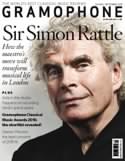Texte paru dans: / Appeared in: |
|
|
Outil de traduction (Très approximatif) |
|
|
Reviewer: David Vickers
This anthology constructs a narrative through Italian music ranging across more than a century, from about 1580 to 1700, and most of the pieces are transcriptions taken from short sacred polyphony originally written for voices. There are not many composers who securely fit the billing as ‘Early Baroque’, and the majority are renowned late Renaissance (Palestrina, Cipriano de Rore, Marenzio, Vecchi and both Gabrielis), but the early-18th-century stile antico is represented by a Roman six-part sinfonia by Francesco Magini (dated 1710) and the four-part motet Stella ista sicut flamina by Giacomo Antonio Perti (1661-1756).
A revolving team of three
cornettists (all of whom switch between different instruments, including the
smaller and higher-pitched cornettini), four trombonists and continuo organist
give priority to contrapuntal shading, but without loss of naturally
accumulating grandeur in Marenzio’s sixpart madrigal Chi dal Delfino (one of
several pieces here taken from the intermedio La Pellegrina, for the wedding of
Ferdinando de’ Medici and Christine of Lorraine in 1589). The distinct texture
of four trombones produces a darker-hued solemnity in Cipriano de Rore’s secular
motet Calami sonum ferentes and one of Palestrina’s umpteen settings of Ave
Maria (performed in a version from a 1591 treatise by Giovanni Bassano that
features solo diminutions for one of the trombones). Cornettist William Dongois
plays diminutions with florid virtuosity and fantasy in Giovanni Gabreli’s
six-part Domine exaudi (from the posthumous 1615 collection Symphoniae sacrae);
his soloing accompanied only by organ will startle those familiar with the
original sixvoice version of Andrea Gabrieli’s motet Maria stabat ad monumentum
(which commenced the Gabreli Consort’s iconic liturgical reconstruction of a
Venetian Easter Mass – Archiv, 7/97). Ensemble Ventosum’s polyphonic conversance
ensures that powerful textures and grandeur are insinuated without needing to
blaringly force the issue, and these expertly played interpretations are manna
from heaven for those who adore Renaissance brass consorts. |
|
|
|
|
|
Cliquez l'un ou l'autre
bouton pour découvrir bien d'autres critiques de CD |
|

/7619990103320.jpg)


